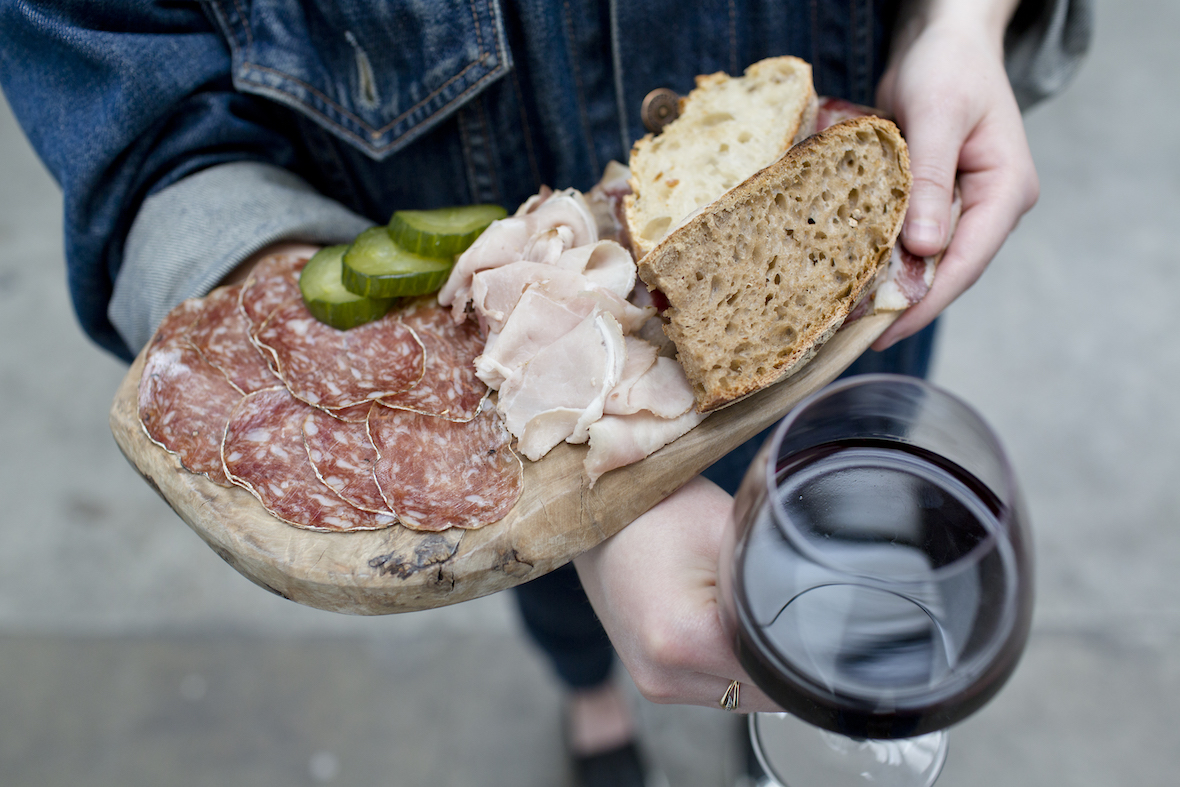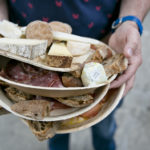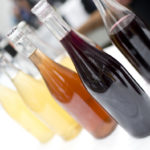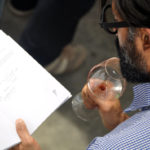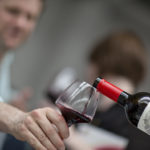Since 2012 Isabelle Legeron has been holding the Raw Wine Fair in London, where the French master of wine makes her home. The fair’s success led her to expand to Berlin in 2015. Next month Raw Wine will makes its U.S. debut in a brand new event space at 99 Scott Avenue in Bushwick on November 6 and 7.
“Hopefully, this will not be the only year,” says Legeron.
It’s not likely. In the past few years “natural” wine has become a darling of New York sommeliers; this has led to new restaurants with all natural wine lists, like Wildair on the Lower East Side, which has made many top 10 lists for the best new restaurants of 2016. Wildair’s wine director, Jorge Riera, is an evangelist for natural wine and says it is all he drinks.
This is all well and good for wine professionals; part of their job is to taste thousands of wines a year and meet with the people who make and grow it. For the consumer, upon whom the success of any wine producer depends, natural wine requires a whole new education, not only to learn what “natural” means, but to appreciate the wine when they taste it.
The first lesson is that “natural,” when it refers to wine, has no agreed upon definition. At Legeron’s Raw Wine Fair it does. Participating producers (in Brooklyn there will be close to 120 with a waiting list) must adhere to a set of parameters with the goal of letting wine drinkers know exactly what they are putting in their bodies.
“This gives the consumer a choice,” says Legeron. “Because it can be really shocking what is put into wine. People go out of their way to eat organic food, but with wine it could be like a battery chicken. There is no information on the label.”
Legeron is a good ambassador for natural wines. Her patient, good humored manner and long view set her apart from fanatics or scolds, whose only audience are others in the wine world. So now for some info that useful for … people in the wine world.
What to expect at the Raw Wine Fair
Here’s the list of what producers must do to show their wine (and a list of producers):
- Farm their vineyards organically and/or biodynamically
- Harvest by hand, because heavy machinery can affect the soil
- Use no commercial yeast (with provision for sparkling wines)
- Do not block malolactic fermentation (when malic acid converts to lactic acid)
- Use no additives, which can include enzymes and vitamins
- Low levels of sulphites, a preservative, are permitted up to 70 milligrams per liter and must be on the label
- No sterile filtration
- No mechanical manipulation, which includes the likes of reverse osmosis
- If a wine is fined (to remove fine particles) or filtered, it must be on the label
- If a wine has been fined with an animal product, it must be labeled as such for vegetarians and vegans
Legeron grew up on a vineyard in the Cognac region of France, which is now commercially farmed by her brother. “We don’t argue about it anymore,” she says. “It’s a big deal to go organic, and I’m only there three to four times a year.”
But for Legeron, there is no excuse for not farming organically. “It should be an ethical and moral obligation,” she says. “Wine is a luxury item; it can be a sign of cash and education. It’s a status symbol and a lot of that is really boring. The key is to bring wine back down to what it used to be: a food to be enjoyed that is quite simple and beautiful. But is is an industry; it’s a tricky balance.”
The first lesson is that “natural,” when it refers to wine, has no agreed upon definition. At Legeron’s Raw Wine Fair it does.
The fair, says Legeron, will give consumers and professionals the opportunity for full transparency. The producers, not representatives, will be there for conversations to allow people to make decisions about what kind of wine they want to buy.
This decision is much easier to make as a restaurant, says Tim Farrell, the wine buyer at Brooklyn Wine Exchange on Court Street in Cobble Hill, where, he says, natural wines are often returned.
“The problem is with retail, you’re not there when they open them,” he says. “A sommelier can say “Let’s put it in a decanter or chill it, something a consumer at home would not think to do.” This is because natural wine tastes a lot different from the wines most consumers are used to drinking. They smell very different due to the lack of or low levels of preservatives. They look different; the color is not usually as bright. And, of course, they taste different. Natural wines do not show best when they are young, nor do they after crossing an ocean.
“These wines are very fragile,” says Farrell. “We retailers must maintain a beneficial environment before they’re opened.” He adds, “Many wines I had in France and then in the U.S. taste worlds apart; they’ve suffered less trauma. But in the past five years, consumers are much more open to these wines and much more understanding of their fragility.”
Natural wine tastes a lot different from the wines most consumers are used to drinking. They smell very different due to the lack of or low levels of preservatives. They look different; the color is not usually as bright. And, of course, they taste different.
For retail shops, where consumers in New York State buy a high majority of their wine, natural wines present a challenge. The Natural Wine Company in Williamsburg recently changed hands, as did Passage de la Fleur on Vanderbilt Avenue, both of which focused on natural wines. The new owners in both places say they intend to continue with those selections.
Attendees of the Raw Wine Fair can expect producers from all over the world; Bloomer Creek from the Finger Lakes will be the sole representative from New York. In addition, Legeron’s goal to make the fair a community event will be fulfilled with local food and beverage producers. “We’re even trying to print our T-shirts on organic cotton,” she says.
She expects attendees from all over the country, most in the trade. For consumers, she suggests coming on the Sunday of the two-day event. In addition to wall-to-wall tastings of wine, there will also be beer, Cognac, cider, mead, tea and vermouth all made according to the standards of Raw Wine. (A mead producer from the Hudson Valley is doing some cool stuff.)
For more information about the fair, check out our events calendar and the Raw Wine’s website. A one-day pass costs $50 or $65 at the door. Two-day passes are $80; $100 at the door. Buy tickets here.
Photos courtesy of Raw Wine.


